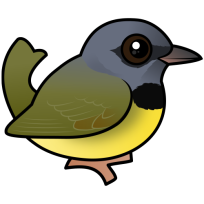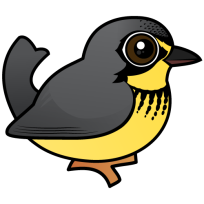The Ovenbird is a large species of New World warbler that breeds across much of the north central and northeastern parts of North America. They are migratory; Ovenbirds spend the winter across much of Central America, the Caribbean, and parts of Florida.
Ovenbirds are known for their loud and familiar breeding song, which is sung deep into the season. A common mnemonic for the song is "Teacher! Teacher! Teacher!". Ovenbirds are ground breeders; they make domed nests on the ground in a construction that somewhat resembles a Dutch oven, giving them their common name.
Ovenbirds also feed mainly on the ground, foraging for small prey items in forest leaf litter. They feed on insects like ants, flies, and beetles.
Added to Birdorable
Hatched November 29, 2016
Measurements
Length:
4.3 to 5.5 inches
(10.9 to 14 cm)
Wingspan:
7.5 to 10.2 inches
(19.1 to 25.9 cm)
Weight:
.6 to 1 ounces
(17 to 28.3 grams)
Золотоголовый дроздовый певун






































